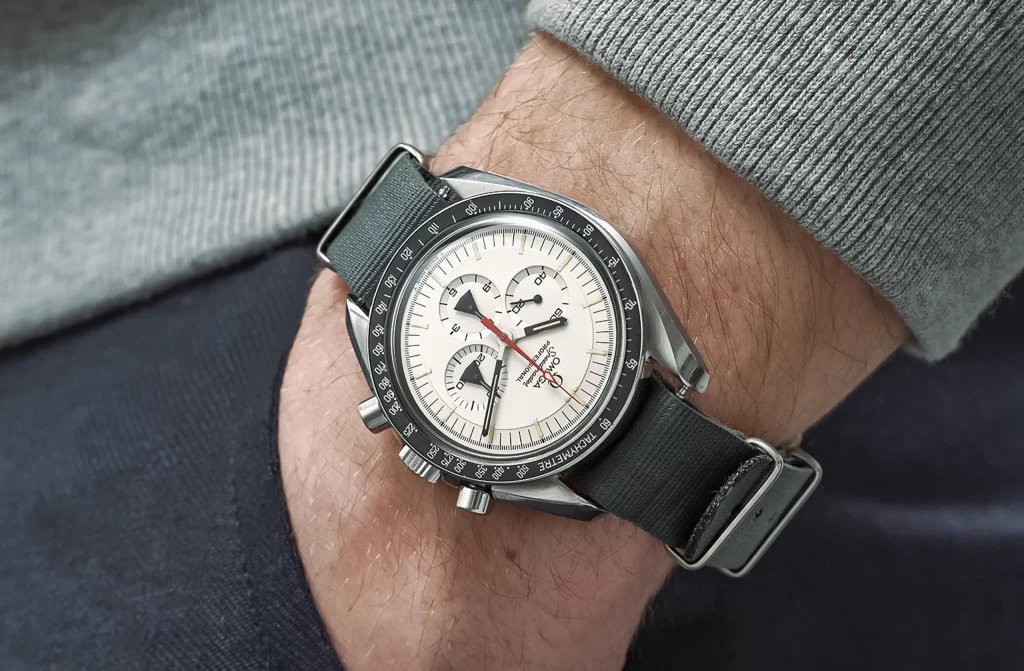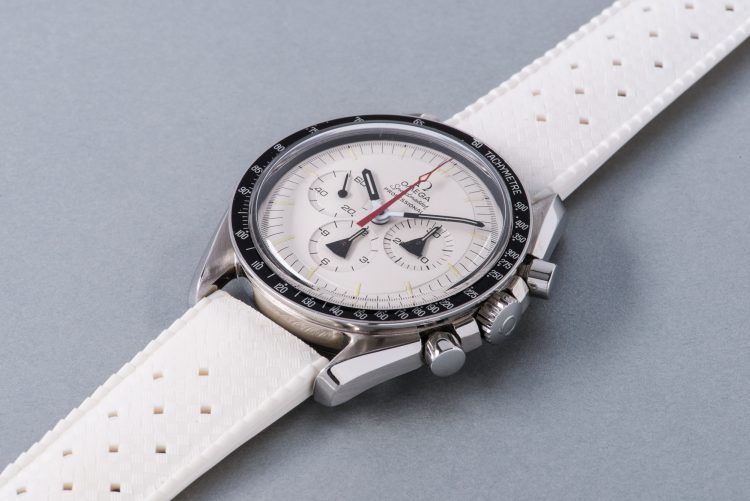Rewriting History: The Omega Speedmaster Alaska II Prototype That Outpriced Modern Icons
In the world of horology, failure is rarely rewarded—unless, of course, it was misunderstood. In 2024, collectors and enthusiasts alike are scrambling to own a piece of Omega’s once-forgotten, now fetishized relic: the Speedmaster “Alaska II.” A prototype developed in the early 1970s as part of Omega’s attempt to produce a more space-resilient timepiece for NASA’s secretive deep space projects, the Alaska II never made it into production. It was deemed too eccentric, too costly, and above all, too “untested” for real missions. But over 50 years later, this watch has emerged from the shadows not as a failure, but as a futuristic anomaly ahead of its time.
In late 2023, a near-pristine Alaska II prototype with its signature red anodized aluminum outer case, oversized pushers, and multi-layered dial sold at a Geneva auction for over $1.2 million—outpacing even platinum Speedmaster Moonwatch variants and vintage Daytona Paul Newmans. The watch’s mystique lies in its contradiction: a failed mission tool that now defines collector prestige. Where once its thermal casing and “rocket switch” pusher were considered bizarre, today they represent a design that dared to think beyond orbit. The revaluation of this industrial oddity is part of a broader trend—one that sees horological anomalies not as missteps, but as misunderstood experiments.
What makes this renaissance so poignant is Omega’s willingness to revisit the Alaska II in 2024 with a commemorative reissue. But as with all acts of resurrection, it brings with it questions: what was kept, what was lost, and what does this tell us about how brands reshape failure into fashion?
Modern Appraisal: Why the Reissue Dropped the Original’s ‘Rocket Button’
The 2024 reissue of the Alaska II, unveiled at Watches & Wonders in Geneva, had collectors applauding and nitpickers whispering. The red thermal case? Faithfully reproduced, now using a modern aluminum-ceramic composite. The dial? A matte white tritium-lookalike finish with the original crosshair subdial layout. The case back? Engraved with “Test Flight Only” to honor the original’s classification. But the most anticipated—and most noticeably absent—detail was the legendary “rocket button,” a curved side pusher encased in protective fluting that Omega originally designed for gloved astronauts to operate during zero-G maneuvers.
In the reissue, the button is gone.
Why? According to Omega’s chief of product engineering, the decision was partly technical, partly philosophical. The original rocket pusher required an additional spring-loaded column wheel mechanism that added over 2mm to the movement height. Reintegrating that function would have made the watch significantly thicker, potentially compromising its commercial wearability. More critically, Omega’s legal and risk teams reportedly flagged the aggressive profile of the original pusher as “noncompliant with current EU impact resistance regulations” for wearable goods.
In other words, what was once a space-age solution was now a legal liability.
The omission, however, did not sit well with purists. Forums were flooded with side-by-side comparisons, some lamenting the reissue as “another neutered homage.” But a deeper reading suggests the Alaska II reissue was never about carbon-copy replication—it was about mythologizing the original’s defiance. By making the rocket button a ghost feature, Omega has turned it into lore. Collectors now whisper about it as the missing crown of an otherwise spectacular revival. The design’s absence fuels obsession more than presence ever could.

Collector Strategy: Three Undervalued ‘Industrial Accidents’ to Watch
The Alaska II’s resurrection has also reinvigorated interest in other watches once considered commercial misfires. As collectors seek the next great “redemption arc,” several models once relegated to drawers and discount bins are seeing renewed attention. Here are three dark horses that insiders believe could be the next Alaska II.
- Heuer Lemania ‘Bundeswehr Flyback’ Ref. 1550 SG
Originally commissioned for the German Air Force in the 1960s, this flyback chronograph was rugged, functional, and utterly unsexy. Its bulky steel case and matte dial offered zero flair—but modern collectors are beginning to notice its mechanical legitimacy and historical rarity. With the rise of militaria-inspired collecting, values have doubled since 2020, and still remain underappreciated given their provenance and flyback complication. - Seiko 7A28-7000 ‘Ripley’ Chronograph
Designed by famed futurist Giugiaro and made famous by Aliens protagonist Ellen Ripley, this asymmetric quartz chronograph was once ridiculed as too “ugly” for formal collectors. Now? It’s a cult design classic. Seiko’s limited-edition reissues sold out instantly in 2021, and original models in mint condition have tripled in price. Its sci-fi heritage and unapologetic weirdness place it squarely in the Alaska II orbit of once-dismissed, now-celebrated watches. - Zenith El Primero Rainbow Flyback (1997)
Released at a time when Zenith’s marketing strategy was erratic and its customer base shrinking, the Rainbow Flyback was a victim of poor timing—not design. With bold color-coded subdials and military-issue specs, the watch didn’t fit late-90s minimalism. But now, it embodies a golden era of bold experimentation. Watch investors increasingly treat it as the sleeper hit of the El Primero lineage.
The pattern is clear: watches born out of technical ambition but rejected by commercial timidity are finally finding their audience. In a collecting culture that values narrative, these “flaws” have become features.
Conclusion: The Redemption of Failure as Luxury’s New Narrative
The Alaska II reissue reminds us that failure, especially in the luxury world, is rarely final. In fact, the very elements that doomed a product in one era may be the same ones that immortalize it in another. The recontextualization of the Alaska II from forgotten oddity to celebrated reissue isn’t just a story about Omega—it’s a broader parable for how we as consumers crave authenticity, risk, and story over sterile perfection.
In a market flooded with nostalgia, the most compelling watches are those that were too early, too strange, or too specialized to succeed. Today’s generation of collectors doesn’t just want the best-selling references—they want the ones with ghosts, controversy, and scars. The Alaska II’s 2024 revival is more than a product launch. It’s a time capsule reopened, a love letter to boldness in design, and a warning to brands that sometimes, the past you buried is exactly what the future wants.
As we look ahead, one thing is certain: the next big horological obsession might already be sleeping in a forgotten design drawer somewhere in La Chaux-de-Fonds, Tokyo, or Biel. And all it takes is one reissue, one auction, or one whisper to bring it back to life.





































